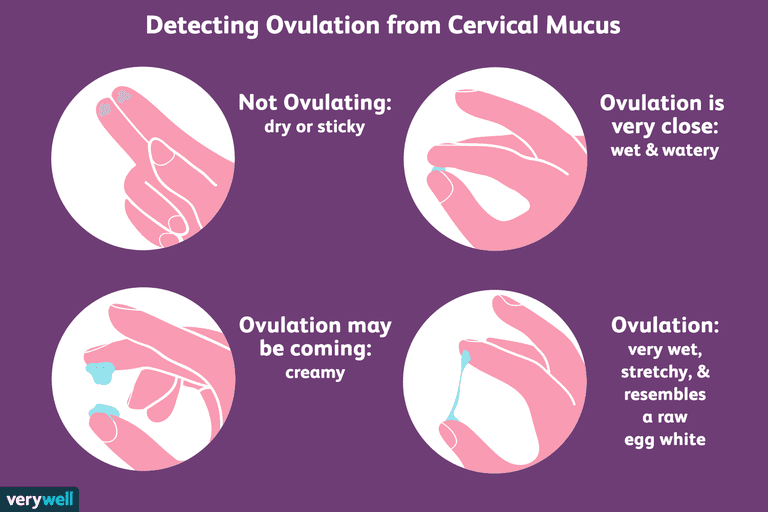Fertility awareness-based methods are different techniques that can be used to either avoid or attempt pregnancy. They differ from other methods of family planning because one does not have to take hormonal birth control or other types of medication. Although these methods can be used to achieve pregnancy, this article will focus on the avoidance of pregnancy. Fertility awareness methods use various indicators to predict if a female is in the most fertile time of their menstrual cycle, called ovulation. If the method predicts that a female is not ovulating, then it should be safe for them to have intercourse. However, if the method predicts that a female is ovulating, then they should abstain from unprotected sex.
Table of Contents
Basal Body Temperature Method (BBT)
Basal body temperature is the temperature of the body when it is at rest. This temperature may increase slightly during ovulation. The BBT method uses this temperature increase to estimate a person’s most fertile time period within their menstrual cycle. ¹
How does it work?

- Take temperature first thing in the morning with a digital thermometer. A female should take their temperature; before getting out of bed and after receiving at least 3 hours of uninterrupted sleep. Temperature can be taken through the mouth, vagina, or rectum, but it must be taken in the same way every day.
- Record the temperature. Temperature can be recorded on paper or a smartphone application. An increase in temperature of 0.5° Fahrenheit or 0.3° Celsius is an indicator of ovulation. A female’s most fertile window ranges from 2 days before the temperature increase to 3 days following the increase.
- Plan intercourse accordingly. After determining the fertile period, a female should avoid sex or use a barrier method during intercourse to reduce the possibility of pregnancy.
Advantages
- Inexpensive
- No side effects like the ones that may occur with hormonal birth control
- Can be used by people who are opposed to hormonal birth control for religious, moral, or other reasons
- Reversible
- Can be stopped or started at any time without any side effects
Disadvantages
- Provides no protection against sexually transmitted infections (STIs)
- Requires attention to detail and the consistent tracking of body temperature
- Some females may ovulate without an increase in BBT, which may make the test ineffective
- BBT can be influenced by health factors aside from ovulation, such as illness, stress, amount of sleep, and other reasons not related to ovulation, which may cause inaccurate results
- Requires a period of abstinence or the use of condoms during the fertile window
- Not as reliable as hormonal birth control since the typical use failure rate can be as high as 24% ²
Cervical Mucus Method
The cervical mucus method uses cervical secretions as an indicator of ovulation. Cervical secretions change throughout a female’s menstrual cycle to help fertilization. In order to use the cervical mucus method properly, one must understand the typical pattern that cervical mucus follows throughout a female’s menstrual cycle.
- After the last day of menstrual bleeding, there is usually no discharge present for 3 to 4 days.
- For the next 3 to 5 days following that, a small amount of mucus appears which looks sticky and cloudy.
- For the next 3 to 4 days the amount of mucus typically increases and appears clear, sticky, wet, and resembles egg whites.
- After that, no mucus appears for 11 to 14 days until the start of the next menstruation.

The number of days for each phase may vary slightly from person to person, but if a female’s cycle does not follow this general pattern, they should consult their doctor before using this method.
How does it work?
- A female may record their cervical mucus for a couple of menstrual cycles before using this method. Start recording mucus on the first day after the end of menstruation. Unprotected sex should be avoided during this preparation phase so that mucus is not confused with semen or other bodily fluids. Douching should also be avoided because it can tamper with mucus results. It is best to check for secretions before and after urinating. One may wipe from front to back and notice the amount of mucus, its color, and its texture. Additionally, one should notice how wet or dry the vulva feels.
- After cervical secretions have been tracked for a few months, sex should be planned accordingly. A female is most fertile when there is a lot of mucus present that appears clear, stretchy, and resembles raw egg whites. This type of mucus is present when ovulation occurs. Ovulation may occur the day after this type of mucus is no longer present. If users of this method want to avoid pregnancy, they should abstain from sex or use a barrier method when they see this mucus.³

Two-Day Method
Additionally, a female who wishes to avoid pregnancy can use the two-day method to determine if it is safe to have unprotected intercourse that day. To use the two-day method, a female should remember if they have either seen or felt the presence of cervical mucus for the past two days (both yesterday and today). If cervical mucus was not present on both days, then one may assume that it is okay to have unprotected sex. Using the two-day method, along with the cervical mucus method, can increase its effectiveness. However, it may also increase the amount of time that a user must abstain from unprotected sex.¹
Advantages
- Free
- No side effects like the ones that may occur with hormonal birth control
- Can be used by people who are opposed to hormonal birth control for religious, moral or other reasons
- Reversible
- Can be stopped and started at any time without any side effects
Disadvantages
- Provides no protection against STIs
- Requires daily monitoring
- Requires training to understand how cervical mucus works and knowledge about one’s own cycle
- A female must be comfortable with examining their mucus
- Requires abstinence or condoms use for the fertile period
- Not as effective as hormonal birth control, since the typical use failure rate can be as high as 23%³
Calendar Method
The calendar method, also known as the Rhythm Method, requires a female to track their menstrual cycle to predict when they will be ovulating. Females should avoid unprotected sex on those days.
How does it work?

- Track 6-12 menstrual cycles before relying on this method. Count from the first day of menstrual bleeding of one cycle to the first day of bleeding in the following menstrual cycle. The number of days from the beginning of one menstrual cycle to the beginning of the next is the duration of that menstrual cycle. It is necessary to track at least six menstrual cycles before relying on this method to avoid pregnancy because the length of every menstrual cycle may vary.
- Determine the first fertile day. To do this, use the following formula: take the total number of days from the shortest menstrual cycle and subtract 18. If a female’s shortest menstrual cycle in the previous months of tracking was 27 days long, then her first fertile day would be day 9.
- Determine the last fertile day. To do this, use the following formula: take the total number of days from the longest menstrual cycle and subtract 11. If a female’s longest menstrual cycle from the previous months of tracking was 34 days long, then her last fertile day would be day 23.
- Plan sex accordingly. A female using this method should abstain from sex or use a barrier method on the days that were determined to be their fertile days. In the example above, a user of this method should abstain from engaging in unprotected sex from day 9 to day 23 of their menstrual cycle.
- Update calculations. To maintain accurate results of one’s fertile window, a female should update their calculations consistently.
Advantages
- Free
- No side effects like the ones that may occur with hormonal birth control
- Can be used by people who are opposed to hormonal birth control for religious, moral, or other reasons
- Reversible
- Can be stopped or started without any side effects
Disadvantages
- Provides no protection against STIs
- Requires the tracking of several menstrual cycles before this method can be used
- Requires the consistent tracking of one’s period, and is susceptible to forgetfulness, which may create inaccurate results about a female’s most fertile window
- One must abstain from sex or use condoms during the fertile window
- Uses basic math, but it is possible to make mistakes
- Results for the fertile window may still be inaccurate, even with consistent tracking
- May not be suitable for females with irregular menstrual cycles
- Not as reliable as hormonal birth control since the typical use failure rate can be as high as 24% ⁴
Concluding Remarks
Fertility awareness methods such as the basal body temperature, cervical mucus, and the calendar method are alternative options for family planning. Even though these methods rely on different measurements, they all track the time during a female’s menstrual cycle when they are most fertile and indicate when one should either abstain from intercourse or use a barrier method. All of these methods have similar advantages and disadvantages. Just like choosing a form of hormonal birth control, selecting which fertility awareness method to use is a personal decision. One’s decision should be based on one’s beliefs, comfort level, and a thorough understanding of the risks involved.
References
- Freundl, G., et al. “State of the Art Non-hormonal Methods of Contraception: IV. Natural Family Planning.” European Journal of Contraceptive and Reproductive Health Care, 2010. Date Accessed: 14 Oct. 2019.
- “Basal Body Temperature for Natural Family Planning.” Web. Mayo Clinic, 2018. Date Accessed: 14 Oct. 2019.
- Cervical Mucus Method for Natural Family Planning.” Web. Mayo Clinic, 2018. Date Accessed: 14 Oct. 2019.
- “Rhythm Method for Natural Family Planning.” Web. Mayo Clinic, 2018. Date Accessed: 14 Oct. 2019.
Last Updated: 24 November 2019
